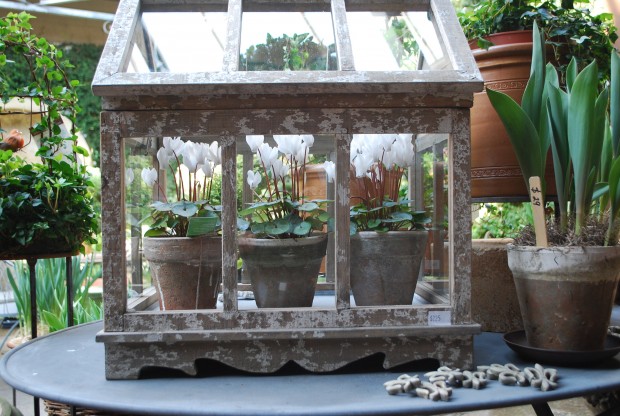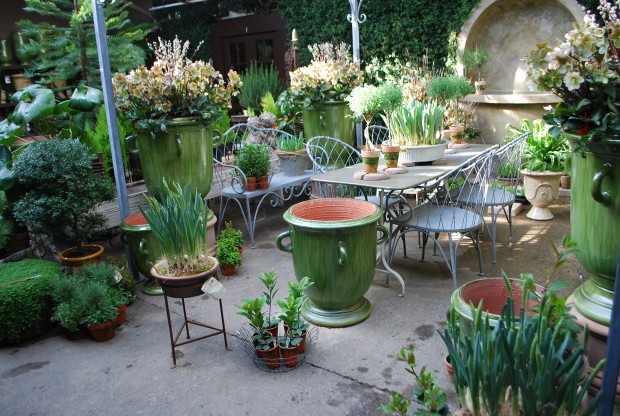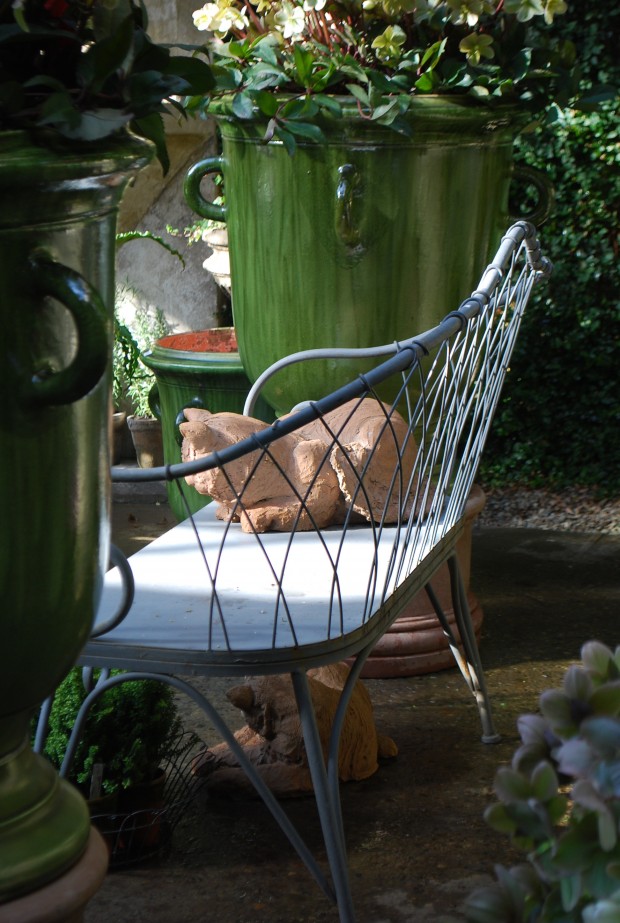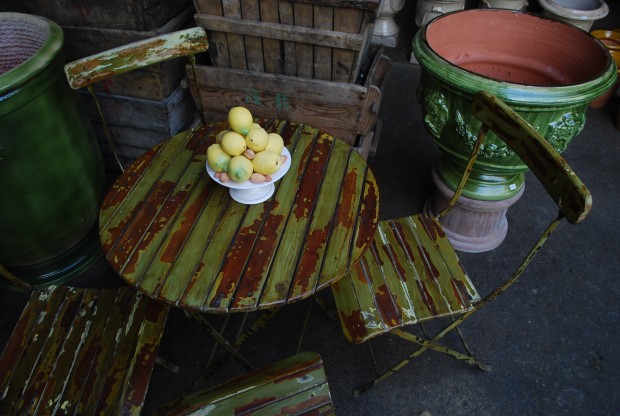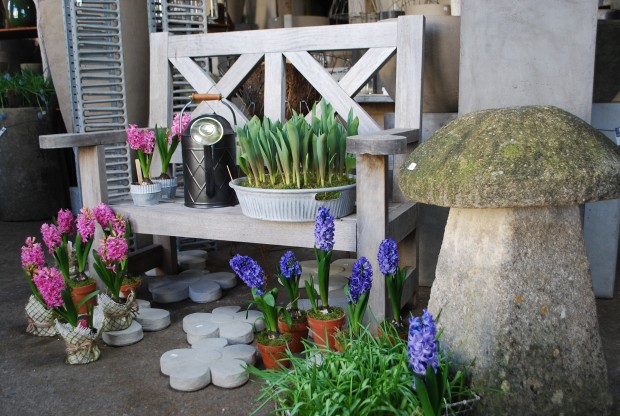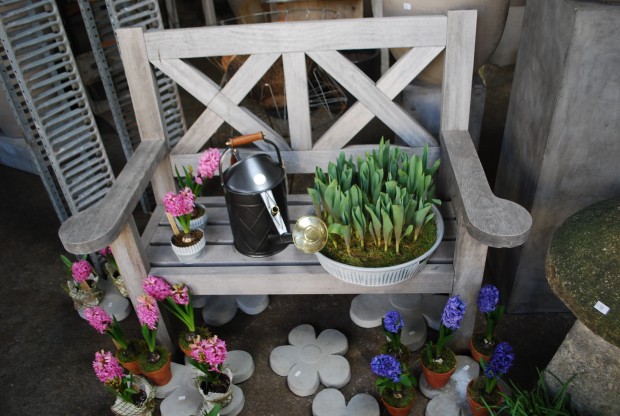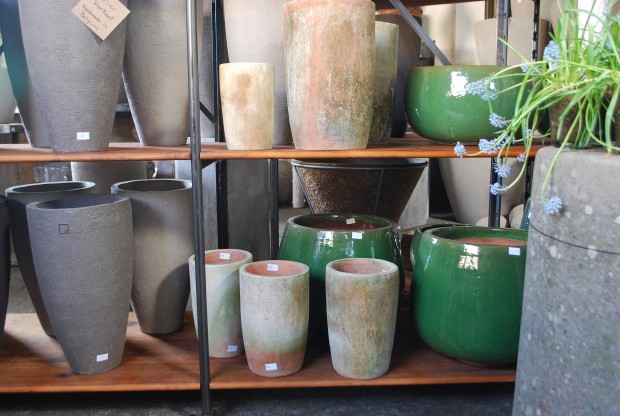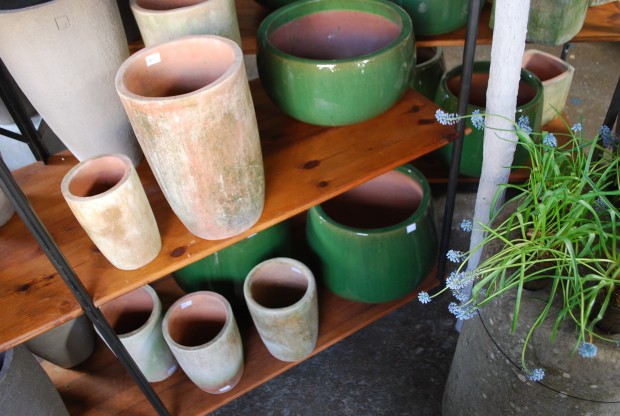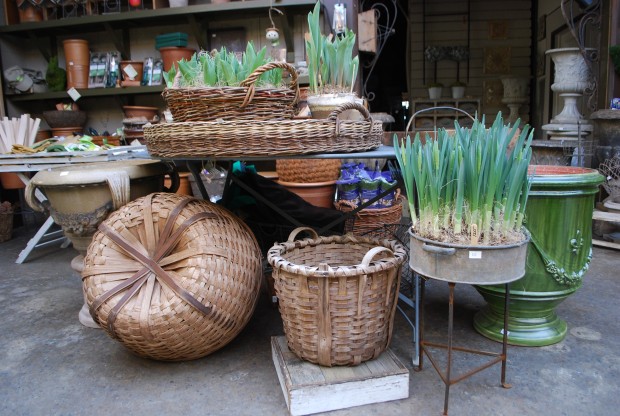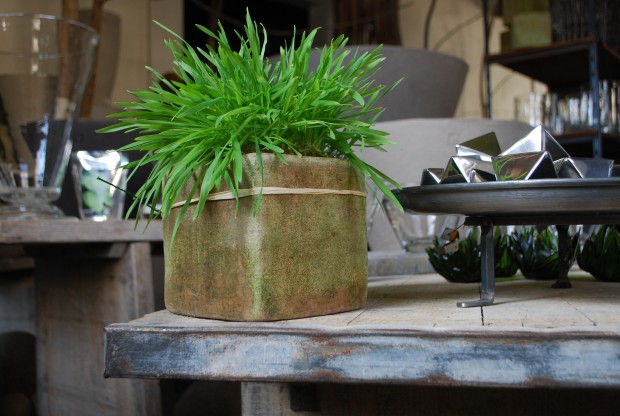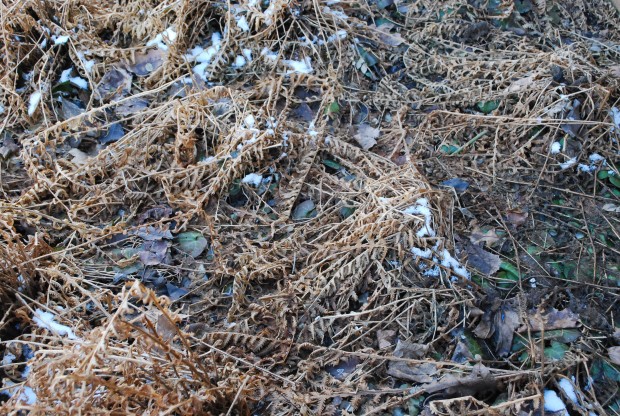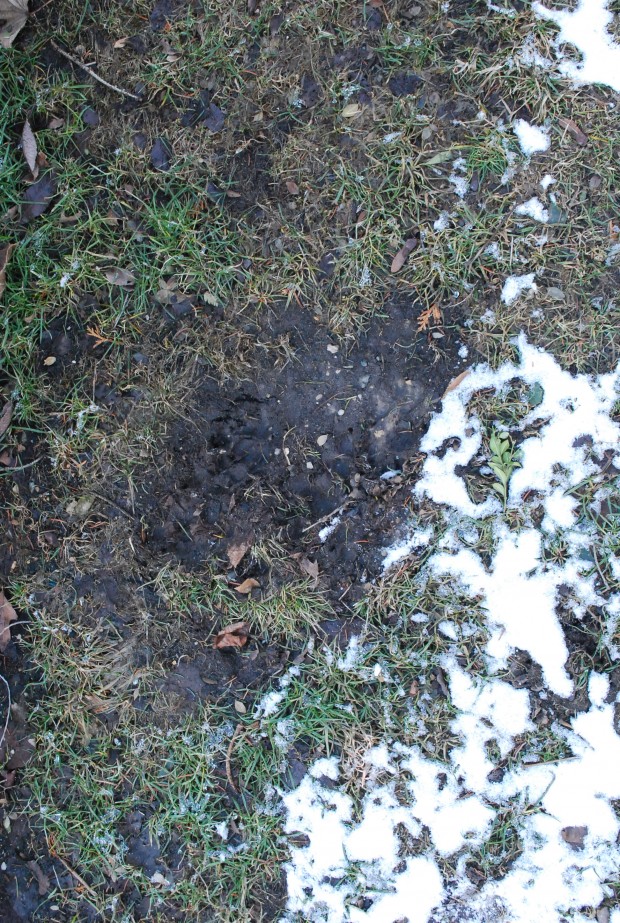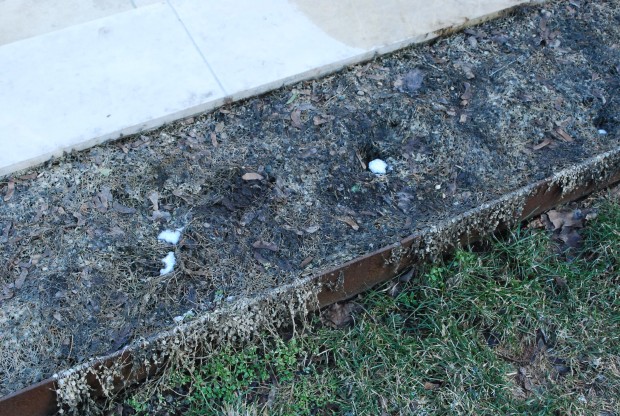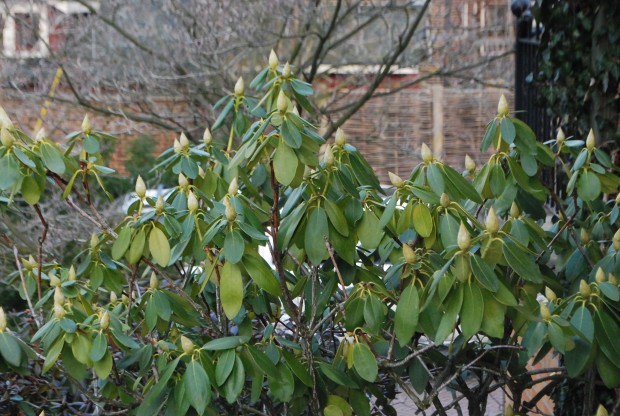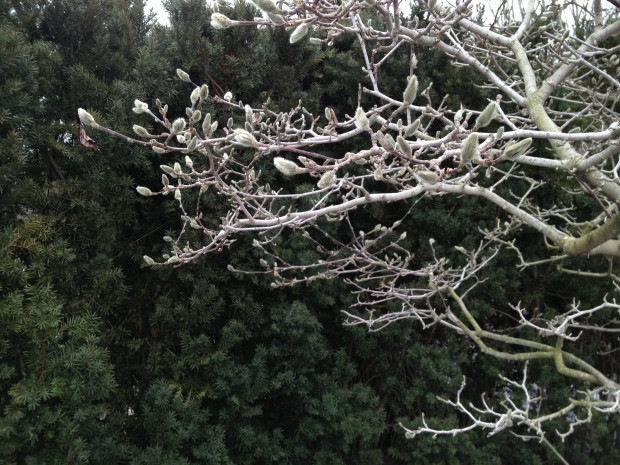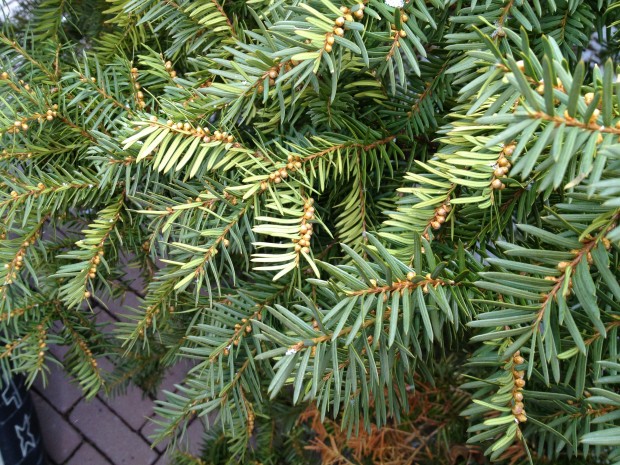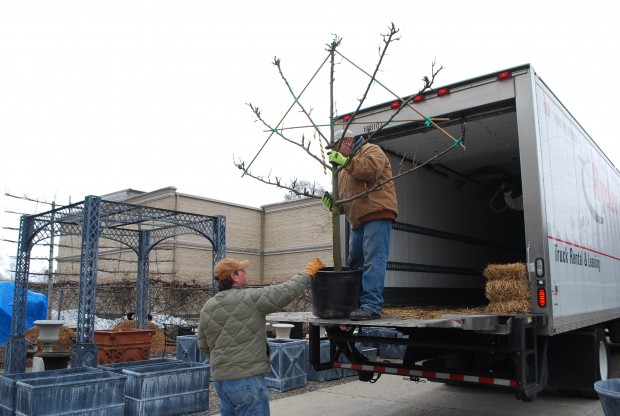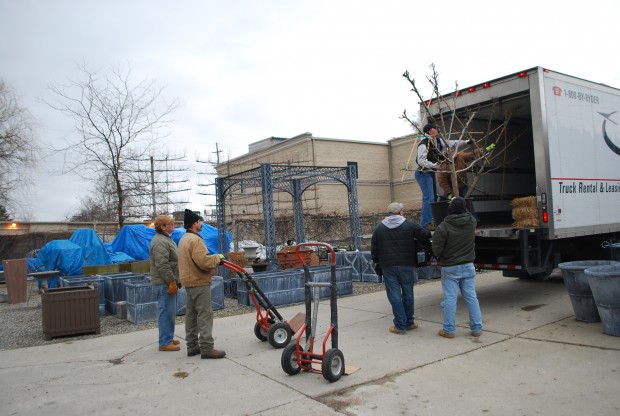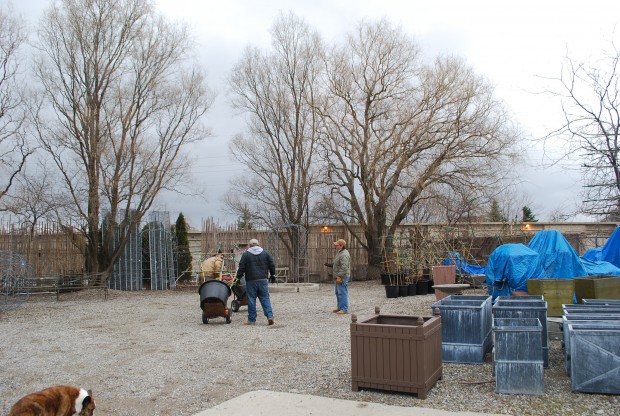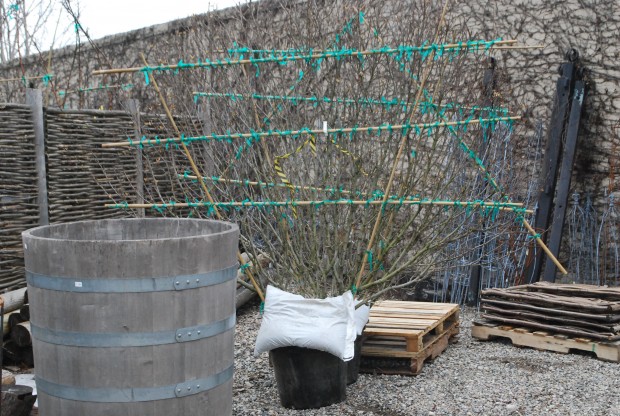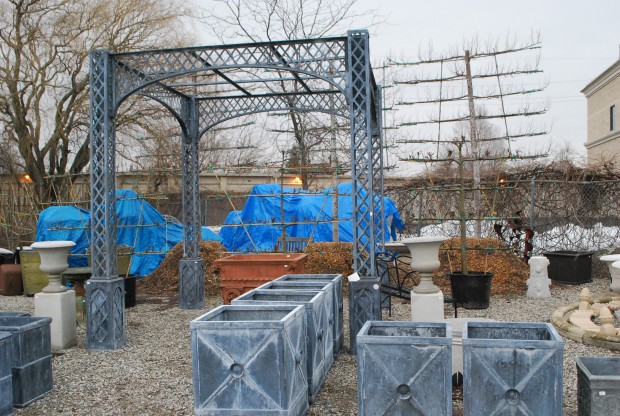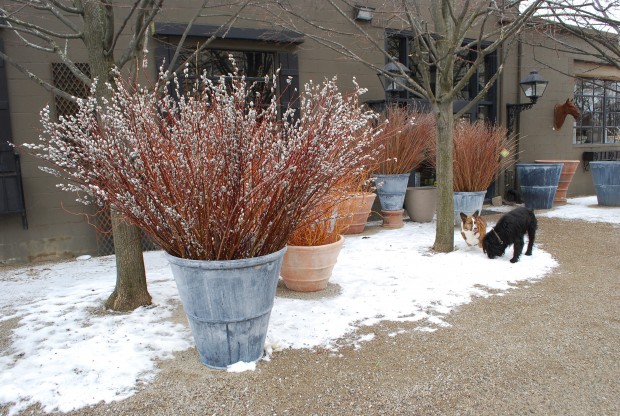
I expected to feel exasperated-but this scene made me laugh. The cut pussy willows are representing for all the world as if it were spring. At their feet, the remnants of hard packed snow and frozen ground tell a different story. Though it is late March, our weather is quite February-like. This is the late winter hand we have been dealt. We have not been able to do so much outside the shop, as everything is frozen to the ground. Some espaliers breaking bud when the arrived went in the garage. Other, unquestionably dormant, we placed outside-and we hope for the best.
 Prairie willow-I am confident it is tough as nails. It grows in the prairies-this means that weather extremes are the norm. I had no problem placing the bunches outdoors; they will shrug off the cold. But what would anyone do with them? Pots, and the soil in them, are still frozen solid. A vase full of prairie willow inside-that would not only be beautiful, it’s just about all we can do. The prairie willow may be fine outside given night temperatures in the teens, but we are holed up, pending a shift of the season. Plants and animals have great mechanisms for dealing with untoward weather. The bears hibernate. The bats congregate deep in caves. The plants go dormant, and stay that way. Lichens go dull in color when dormant. A heavy rain brings them roaring back to an interactive life. Some pine cone seeds will not germinate, unless there is a fire. Other seeds will not germinate unless they have a cold period, or a good soaking. The perennials die back to the ground. They endure the winter, their life on hold- underground.
Prairie willow-I am confident it is tough as nails. It grows in the prairies-this means that weather extremes are the norm. I had no problem placing the bunches outdoors; they will shrug off the cold. But what would anyone do with them? Pots, and the soil in them, are still frozen solid. A vase full of prairie willow inside-that would not only be beautiful, it’s just about all we can do. The prairie willow may be fine outside given night temperatures in the teens, but we are holed up, pending a shift of the season. Plants and animals have great mechanisms for dealing with untoward weather. The bears hibernate. The bats congregate deep in caves. The plants go dormant, and stay that way. Lichens go dull in color when dormant. A heavy rain brings them roaring back to an interactive life. Some pine cone seeds will not germinate, unless there is a fire. Other seeds will not germinate unless they have a cold period, or a good soaking. The perennials die back to the ground. They endure the winter, their life on hold- underground.
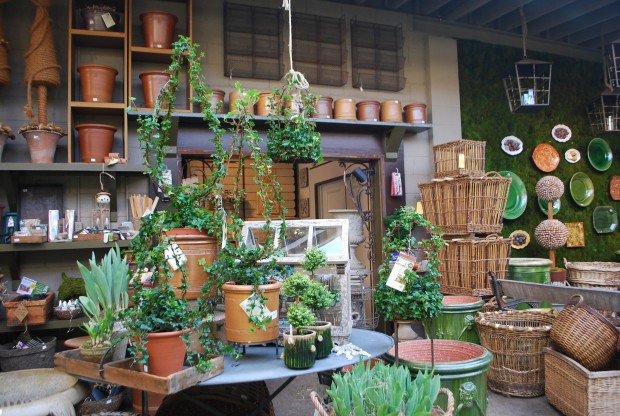
The first truly warm day of spring-insects hatch, and swarm. The grass puts on a green outfit. The bulbs, long silent underground, push up towards the sun. The process by which the natural world wakes up after a winter is an extraordinary event to witness. Who knows what day will signal sweet release from the dormant season. No doubt, every northern gardener is waiting. Given that people do not hibernate, they are witness to every moment of the winter.
I am a natural organism that does not go dormant. My winter life involves heat and shelter. This means I live through the winter, like it or not. I am not a skier or a snow shoe afficianado-I endure. My experience of the dormant season involves lots of winter gear-coat, boots, gloves, and hat. And the time it takes to get dressed. No doubt, I am a hothouse variety. In Victorian times, miniature greenhouses known as Wardian cases would protect tropical plants from any hint of cold. Rob’s placement of these cyclamen in a Wardian case-his dry and subtle humor at work. Cyclamen cleave to the cold. No need to heat them up. What really needs a place in this Wardian case-all of us gardeners living in northern climates.
The late winter weather aside, we have plants. Potted bulbs. Hellebores. Delivered just today, topiary plants, big and small. Bulb pans overflowing with angelina. Tiny euonymus topiaries. We have had to make a place for the plants under glass, and inside. We heat this space to 50 degrees. Any amount of sunshine will quickly warm it up. From now until the middle of May, this room will be stuffed with plants. The moment the winter weather breaks, every gardener will be looking for plants.
 The plants make the space smell great. The hyacinths blooming fill the entire space with their fragrance. Rob washes down the floor almost every day. The resulting humidity is a welcome break from the dry winter air.
The plants make the space smell great. The hyacinths blooming fill the entire space with their fragrance. Rob washes down the floor almost every day. The resulting humidity is a welcome break from the dry winter air.
Even this stoneware cat has an aura opf contentment, given a sunny spot on a bench.
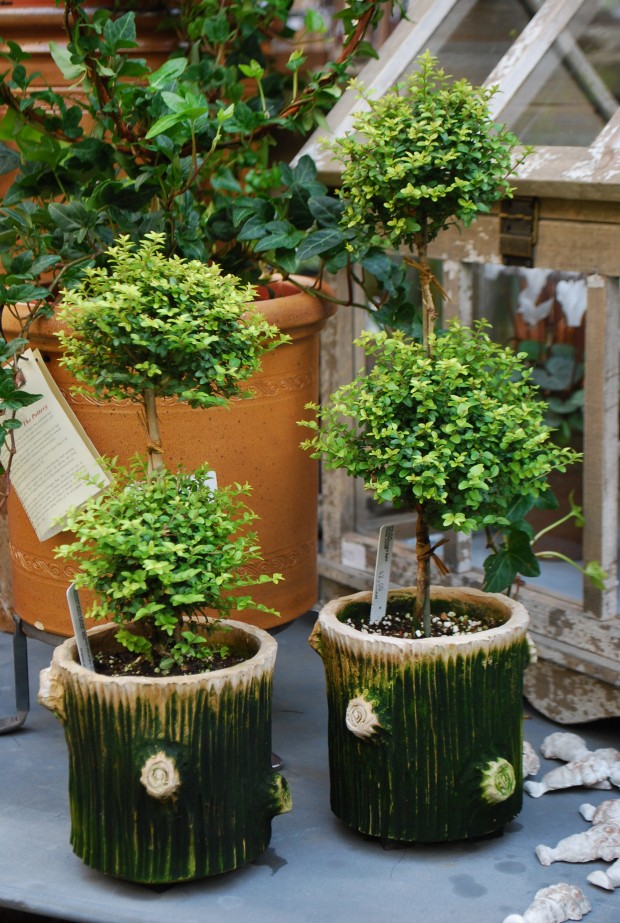
These double ball boxwood-leaved honeysuckle topiaries are charming in their stump pots. The moss on the surface tells the story. These plants have been grown with heat, water, and some shade.
 Euonymus trained into a topiary standard is a great plant for a small space. It is the most luscious shade of green imaginable.
Euonymus trained into a topiary standard is a great plant for a small space. It is the most luscious shade of green imaginable.
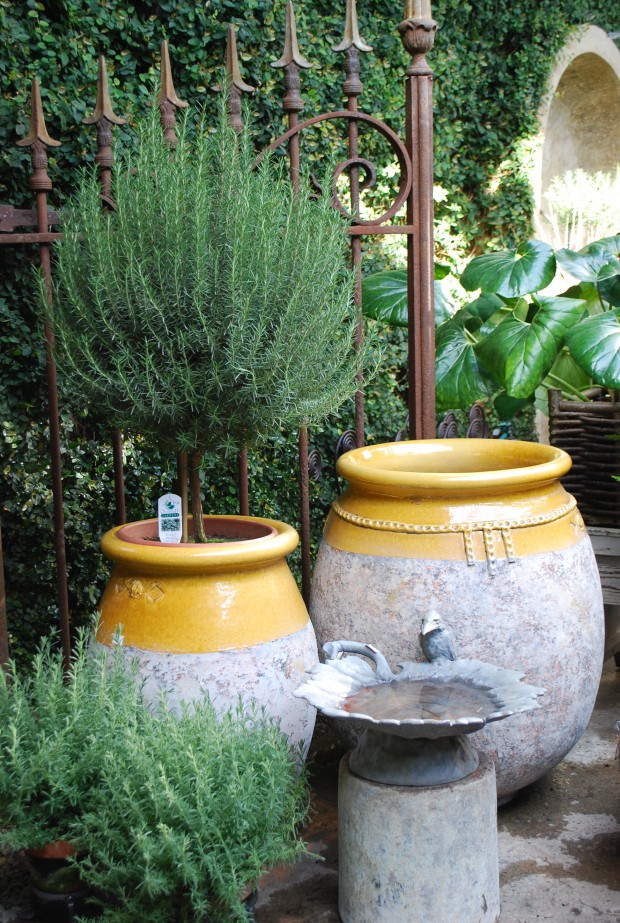 Rosemary on standard, and tubs of lavender have that warm Mediterranean look-not to mention the fragrance.
Rosemary on standard, and tubs of lavender have that warm Mediterranean look-not to mention the fragrance.
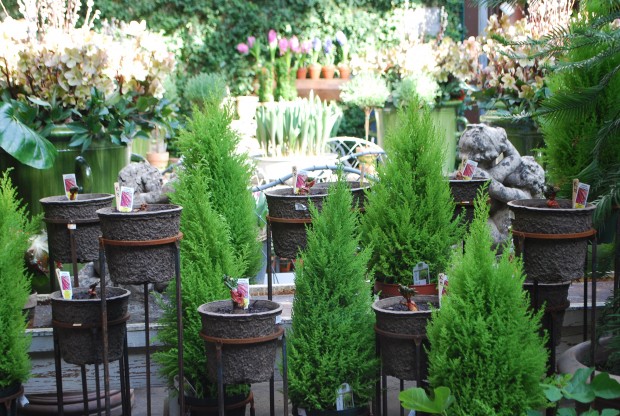 Rob starts rhubarb in pots early-they make such great centerpieces in spring pots. The large leaves atop red stalks-you can’t miss them. Nothing could be further in color and texture from rhubarb than a lemon cypress. This lime foliaged version of an Italian cypress is not hardy in our zone, though it will tolerate fairly low temperatures. They also look great in spring containers. Plants wintered in a space that stays above freezing grow fast.
Rob starts rhubarb in pots early-they make such great centerpieces in spring pots. The large leaves atop red stalks-you can’t miss them. Nothing could be further in color and texture from rhubarb than a lemon cypress. This lime foliaged version of an Italian cypress is not hardy in our zone, though it will tolerate fairly low temperatures. They also look great in spring containers. Plants wintered in a space that stays above freezing grow fast.
 Ivy topiaries are great for shady locations outdoors, and they are fairly easy to winter indoors. The vines grow fast if they are happy. Regular snipping to hold the shape is one of those garden chores that is actually a pleasure. How Rob has paired them will simple terra cotta cylinders is handsome.
Ivy topiaries are great for shady locations outdoors, and they are fairly easy to winter indoors. The vines grow fast if they are happy. Regular snipping to hold the shape is one of those garden chores that is actually a pleasure. How Rob has paired them will simple terra cotta cylinders is handsome.
 The shop has a few other places that get good light, and a fair amount of sun on a sunny day. Forced bulbs are good for low light spots indoors. They come already programmed to bloom. If the light is too low, the green of the foliage will fade, and the leaves will stretch and flop over. It’s only natural that plants seek the light-it is essential to their well being.
The shop has a few other places that get good light, and a fair amount of sun on a sunny day. Forced bulbs are good for low light spots indoors. They come already programmed to bloom. If the light is too low, the green of the foliage will fade, and the leaves will stretch and flop over. It’s only natural that plants seek the light-it is essential to their well being.
 Even low light tolerant plants will struggle if that low light goes on for too long. We rotate our plants in and out of low light areas, in a effort to keep them happy. Plants placed in the dark too long look as grumpy as gardeners who are stuck indoors.
Even low light tolerant plants will struggle if that low light goes on for too long. We rotate our plants in and out of low light areas, in a effort to keep them happy. Plants placed in the dark too long look as grumpy as gardeners who are stuck indoors.
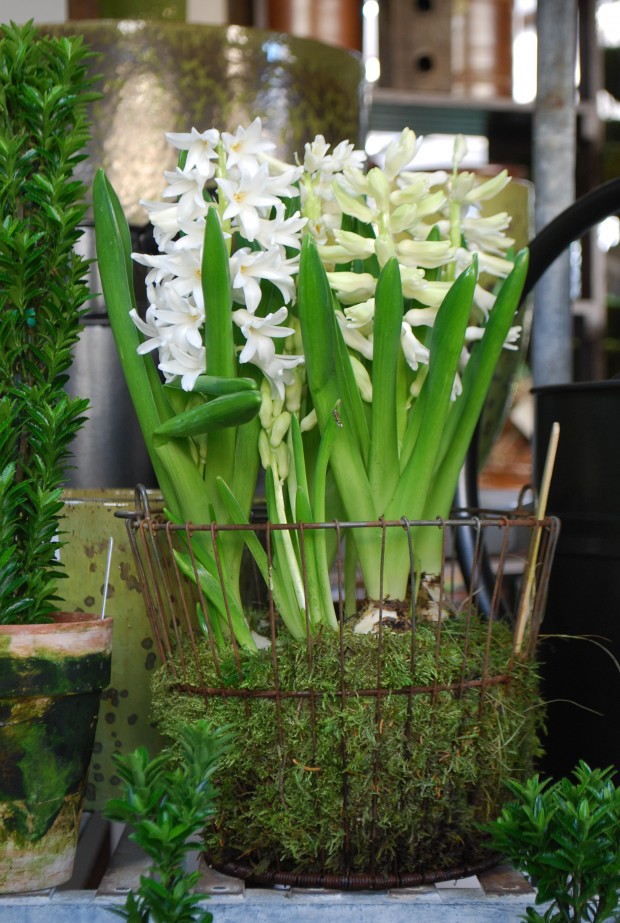 Hyacinths forced in pots provide a lot of late winter pleasure. The leaves are good looking. The buds are good looking. The flowers will last quite a while, provided they have a well lit spot that is not too hot. Potting them low in a container provides a little support for the big leaves and large flowering stalks.
Hyacinths forced in pots provide a lot of late winter pleasure. The leaves are good looking. The buds are good looking. The flowers will last quite a while, provided they have a well lit spot that is not too hot. Potting them low in a container provides a little support for the big leaves and large flowering stalks.
 Spring plants indoors-a way to make the best of the worst of it.
Spring plants indoors-a way to make the best of the worst of it.
